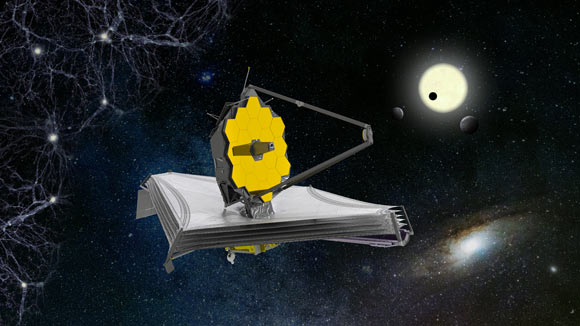“Webb welcome home”, as mentioned by NASA administrator Bill Nelson in a statement. The telescope deployment is complete on Monday at 2 p.m. EST.
The James Webb Space Telescope- an infrared telescope with a primary mirror, 6.5m in diameter, was formerly known as the “Next Generation Space Telescope” but later in September 2002, it was renamed as James Webb Space Telescope, after the former NASA’s administrator, James Webb.
NASA’s James Webb Space Telescope has reached its desired destination after a month of space travel. It is a collaboration between NASA, European Space Agency (ESA), and Canada Space Agency. The mission was launched on 25th of December.
Overview
The successor to the Hubble Space Telescope, James Webb Space Telescope is the largest space observatory ever built. Its enormous sized sunshield is equivalent to the size of a tennis court (approximately). The total diameter of the JWST’s gold-plated main mirror is 6.5m.
In addition, its primary mirror is made of 18 segments that unfold after launch. The material used for making mirrors is ultra-lightweight beryllium. Some of the instruments of the telescope have detectors that are capable of recording faint signals.
Difference between the Hubble Telescope and Webb Telescope
The fundamental difference between the telescopes is of their respective sizes. Hubble collects light using its main mirror, which is 2.4m in diameter, whereas Webb’s primary mirror is 6.4m in diameter.
It is significantly gigantic, as it has to be folded to fit inside its rocket launch.
The most prominent feature of Webb telescope is that it can detect light which Hubble cannot. Interestingly, this light is invisible to the human eyes; however, it is the type of light that glows from the bright objects of distant galaxies.
Furthermore, the distance from the earth’s surface varies. The Hubble telescope is orbited above the Earth’s atmosphere, while the JWST is orbited around 1.5 million kilometers away.
What are the goals of Webb mission?
It has quite a few mission goals, such as, examining the celestial objects which have formed shortly after the Big Bang. Investigating on how the galaxies have evolved or formed, and finding the evidence of dark matter.
Since the JSWT’s primary mirror segments and secondary mirror have been deployed. Therefore, the experts will soon begin the process of aligning.
“We are on the verge of aligning the mirrors, instrument activation and commissioning, and start of wondrous and astonishing discoveries”, said Bill Ochs, Webb project manager at NASA’ Goddard Space Flight Centre.

